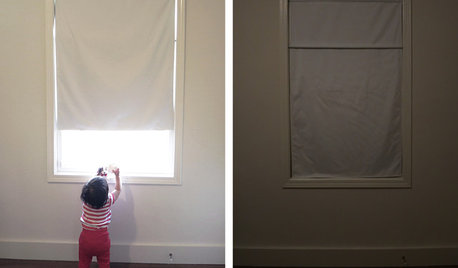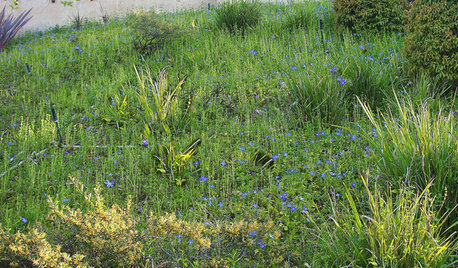residue on bottom of Geopot with 5-1-1
njitgrad
9 years ago
Related Stories

DIY PROJECTSHow to Make a Top-Down, Bottom-Up Window Shade
Block light and control privacy high or low with a no-frills magnetic covering you can whip up for less than $30
Full Story
DECORATING STYLESOutfit a Cottage-Style Remodel, Top to Bottom
If you're renovating with a cottage look in mind, these fixtures, finishes and accessories will bring on the charm
Full Story
COTTAGE STYLEHouzz Tour: Lowcountry Charm for a South Carolina Cottage
Smart design and beautiful views help a family of 5 live comfortably in 1,200 square feet
Full Story
EVENTSTreasure Hunting at the Brimfield Antiques Fair
More than 5,000 antiques dealers are selling their goods along a 1-mile stretch of rural New England this week. Here's what we found
Full Story
HOUZZ TOURS13 Character-Filled Homes Between 1,000 and 1,500 Square Feet
See how homeowners have channeled their creativity into homes that are bright, inviting and one of a kind
Full Story
BATHROOM WORKBOOK5 Ways With a 5-by-8-Foot Bathroom
Look to these bathroom makeovers to learn about budgets, special features, splurges, bargains and more
Full Story
MOST POPULAR5 Remodels That Make Good Resale Value Sense — and 5 That Don’t
Find out which projects offer the best return on your investment dollars
Full Story
PETS5 Finishes Pets and Kids Can’t Destroy — and 5 to Avoid
Save your sanity and your decorating budget by choosing materials and surfaces that can stand up to abuse
Full Story
DECORATING GUIDES5 Decor Trends to Try — and 5 to Rethink
Some style trends are worth jumping onboard. Others you may want to let fade from your memory
Full Story
HOUZZ TOURSMy Houzz: Elegant Mediterranean With Room to Roam
A 1-acre home in Southern California gives a sports-minded family a place to swim, play hockey and basketball, entertain and enjoy the view
Full Story



johns.coastal.patio
greenman28 NorCal 7b/8a
Related Professionals
Forest Acres Landscape Architects & Landscape Designers · Gainesville Landscape Contractors · Wakefield Landscape Contractors · Corona Landscape Contractors · Fair Oaks Landscape Contractors · Mastic Beach Landscape Contractors · Ferguson Landscape Contractors · Arroyo Grande Window Contractors · Artesia Window Contractors · Clarksburg Window Contractors · Greenburgh Window Contractors · Prairie Village Window Contractors · Bethesda Fence Contractors · Lorton Fence Contractors · Staten Island Fence Contractorsseysonn
greenman28 NorCal 7b/8a
johns.coastal.patio
njitgradOriginal Author
greenman28 NorCal 7b/8a
johns.coastal.patio
greenman28 NorCal 7b/8a
johns.coastal.patio
nil13
njitgradOriginal Author
johns.coastal.patio
njitgradOriginal Author
johns.coastal.patio
greenman28 NorCal 7b/8a
nil13
greenman28 NorCal 7b/8a
drew51 SE MI Z5b/6a